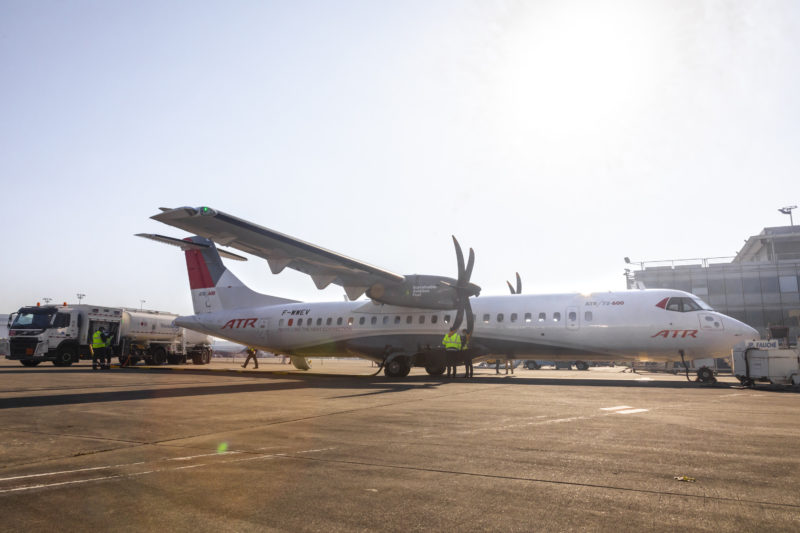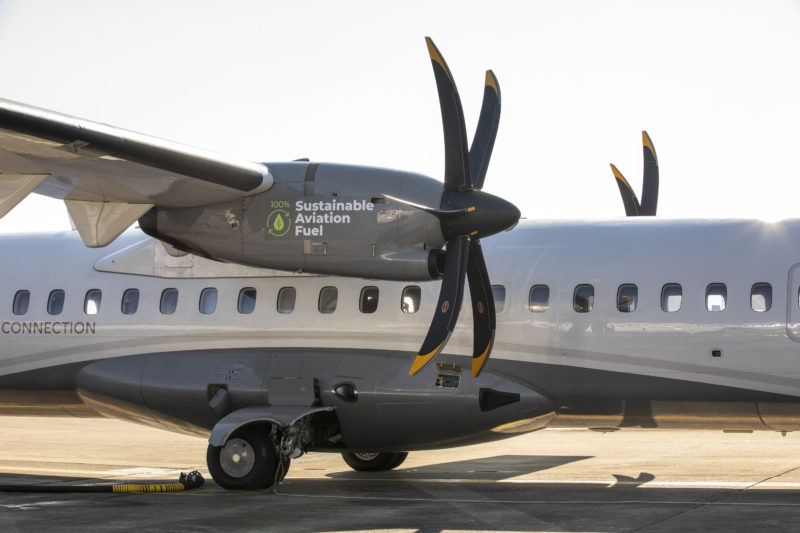The aviation industry continues to take steps to move away from current aviation fuel sources, with trials on going with Sustainable Aviation Fuel (SAF). ATR Aircraft is the latest manufacturer to begin tests with such a product.
ATR Aircraft have performed a series of ground and flight tests on its ATR 72-600 prototype aircraft, cumulating seven flight hours with 100% Sustainable Aviation Fuel (SAF) in one engine. The aircraft was powered by Neste MY Sustainable Aviation Fue produced from 100% renewable waste and residues raw materials, such as used cooking oil.
These tests are part of the 100% SAF certification process for ATR aircraft.
In September 2021, ATR announced a collaboration with Braathens Regional Airlines and Neste to accelerate this certification. The three companies are working closely together, targeting a demonstration flight in 2022 on a Braathens Regional Airlines’ ATR aircraft. The aim is to complete the certification process of ATR aircraft for 100% SAF by 2025.
In Quotes
Stefano Bortoli, ATR’s Chief Executive Officer said:
“As the regional market leader, our aim is to lead the change to decarbonisation. Already emitting 40% less CO2 than similarly-sized regional jets, ATR turboprops are the ideal platform to offer significant advances in the reduction of CO2 emissions. The achievement of this great milestone shows that we are fully committed to making the use of 100% SAF possible and helping our customers meeting their objectives to provide even more sustainable air links – not in 2035 or 2050 but in the coming years.”
The role of SAF with ATR
Sustainable Aviation Fuels are a key pillar of the aviation industry’s decarbonisation strategy, with an immediate impact on reducing CO2 emissions. It is expected that an ATR flying on a typical regional route with 100% SAF in both engines would reduce CO2 emissions by 82%.
There’s still the issue of SAF at volume
Sustainable Aviation fuels are different to biofuels – in that they do not compete with food stocks, agriculture and so on. For example, Neste currently has an annual capacity of 100,000 tons of SAF, with them aiming to scale to 1.5 million tons of SAF annually by the end of 2023.
That compares with 95 billion gallons of Aviation Fuel that are currently being used currently per annum.
That is one heck of a gap to fill.
Whilst we look to options – such as Bio-fuels, blended fuel options (combining SAF/Biofuel with Fossil fuel), Battery and Hydrogen, for example, airlines and aircraft manufacturers will look toward “drop-in replacements” for their current fuels, the challenge will be for these new sources to in the volumes the industry requires.
And that could be SAF’s ultimate challenge.
Welcome to Economy Class and Beyond – Your no-nonsense guide to network news, honest reviews, featuring in-depth coverage, unique research, as well as the humour and madness as I only know how to deliver.
Follow me on Twitter at @EconomyBeyond for the latest updates! You can follow me on Instagram too!
Also remember that we are part of the BoardingArea community, bringing you the latest frequent flyer news from around the world.

